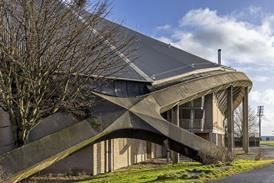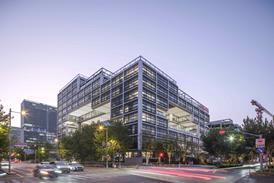- Home
- Intelligence for Architects
- Subscribe
- Jobs
- Events

2024 events calendar Explore now 
Keep up to date
Find out more
- Programmes
- CPD
- More from navigation items
Championing sustainability: How Paris 2024 is reshaping the future of the Olympics

The Paris Olympics is embracing an approach pioneered by London in 2012 and taken to the next level, utilising existing venues and temporary structures as much as possible, Ben Flatman writes
The Games of the XXXIII Olympiad, starting in Paris this month, mark the end of an architectural era. Largely gone are the starchitects and quintessentially French grands projets. And in their place are existing and temporary venues.
London 2012 pioneered the use of temporary venues but was still dominated by a new stadium and Olympic Park in east London. Even the last games in Tokyo had a landmark new stadium – not untypically marred by controversy when Zaha Hadid’s design was dropped as too expensive and repalced by another by Kengo Kuma.
This time, however, the Stade de France, built to host the 1998 football World Cup, will be pressed into action as the main Olympic venue. It is a reflection of how far arguably the world’s biggest sporting event has moved towards more flexible and sustainable venues.
…
This content is available to registered users | Already registered?Login here
You are not currently logged in.
To continue reading this story, sign up for free guest access
Existing Subscriber? LOGIN
REGISTER for free access on selected stories and sign up for email alerts. You get:
- Up to the minute architecture news from around the UK
- Breaking, daily and weekly e-newsletters
Subscribe to Building Design and you will benefit from:

- Unlimited news
- Reviews of the latest buildings from all corners of the world
- Technical studies
- Full access to all our online archives
- PLUS you will receive a digital copy of WA100 worth over £45
Subscribe now for unlimited access.






